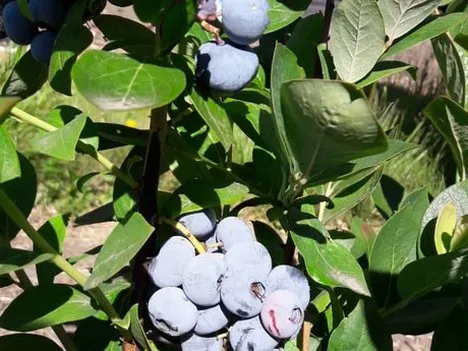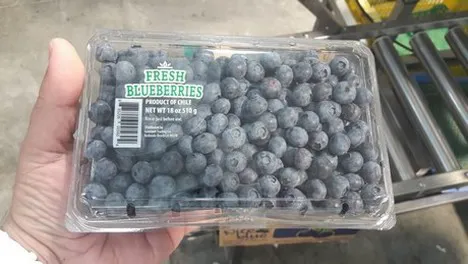After a challenging December, supplies and demand of blueberries in North America are evening out once again.
“We’re in the middle of the Chilean season right now,” says Luciano Fiszman of Redondo Beach, Ca.-based Gourmet Trading Co., who notes that while the Central North region of Chile has wrapped production, the Southern region is underway. “We’re expecting decent volume from the South. But this year the weather has been tough for the South and the Central North and this will present challenges to the South. It’s still uncertain as to how much volume Chile will see on the back end of their production.”
Right now, the bulk of blueberries in North America come largely from Chile. But some smaller volumes are also still arriving from Peru, which is wrapping up its production, and Mexico. There’s also a small amount of production in California.

Unusual end to the year
However, January proved to be tricky following an interesting December. The market is largely dominated by Peru from September through to December and the pricing in December showed to be lower than in years past. “By the end of the year, the market saw very low pricing,” says Fiszman. “This was below break even for growers and had a direct impact on supply.”
In fact, overall, the blueberry picture has changed in the last decade or so. At one time, the offshore deal for blueberry supplies belonged virtually solely to Chile and Argentina somewhat, while now Peru and Mexico also contribute supplies. (In fact, in newer developments, this year Peru will produce more fresh blueberries than Chile.) “So the market in the fall and winter windows has changed due to the fact that there’s more production from other countries,” says Fiszman.
So what happened in December? The month saw break-even pricing for growers through to the holidays and into the first of January, when it dropped even below break even. “There was much more product in December 2019 than in 2018 and because most retailers had been promoting in October and November, they took a break in December and didn’t promote as much. In years past, December was a hot market with high prices,” says Fiszman. “But there was still a lot of production so this December wasn’t a good market because everybody had inventory.”

A year ago
That’s quite a different picture compared to December 2018. “The year before, the market crashed and collapsed through November because there weren’t enough promotions in place to absorb the volume,” says Fiszman. “The market was then hungry to promote in December and therefore the market in December was big. There was a lot of consumption, retailers moved a lot of product, everybody was happy. That is the power of promotions.”
Following December 2019, this meant in January 2020, growers in both Peru and Chile opted to not send as much product in order to re-balance the market. “Now they’re meeting again and therefore the price is better this week than last week. And I expect pricing to firm up coming next week as well,” says Fiszman.
That said, he notes that the pricing coming back up means it’s just returning more to where pricing should be for blueberries. “It’s getting back from below cost to breaking even or making a bit of money,” he says. “It will still stay somewhat flat through February because Chile will still come on with product and Mexico will come with product. Pricing will be better in February than January but it’s not going to be historical pricing either.” While Mexico began production three months ago, cooler temperatures has slowed production. Fiszman anticipates seeing Mexico peak in March and April.

Working together
All of this means the countries competing on supplying blueberries to North America during the fall and winter continue to work on how to coexist. “The market has to learn how to move it so it’s good for everybody,” says Fiszman, noting that things like pack sizes and pricing could evolve.
But he also notes that with such strong competition, something else is becoming increasingly important in the product. “You can’t get away anymore at this time of year with below average product,” says Fiszman. “Competition will push people and the quality is crucial.”
For more information:
Luciano Fiszman
Gourmet Trading Co.
Tel: +1 310 216 7575 ext 1888
Luciano@gourmettrading.net
www.gourmettrading.net
